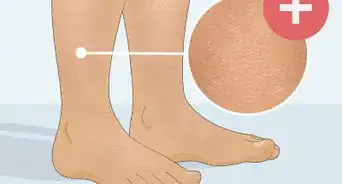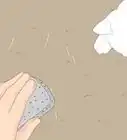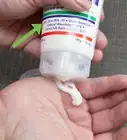This article was co-authored by Laura Marusinec, MD. Dr. Marusinec is a board certified Pediatrician at the Children's Hospital of Wisconsin, where she is on the Clinical Practice Council. She received her M.D. from the Medical College of Wisconsin School of Medicine in 1995 and completed her residency at the Medical College of Wisconsin in Pediatrics in 1998. She is a member of the American Medical Writers Association and the Society for Pediatric Urgent Care.
There are 11 references cited in this article, which can be found at the bottom of the page.
wikiHow marks an article as reader-approved once it receives enough positive feedback. In this case, several readers have written to tell us that this article was helpful to them, earning it our reader-approved status.
This article has been viewed 411,870 times.
We get it—dry skin around your nose can be irritating! Maybe you get flaky skin every now and then or it's a recurring problem. No matter what the issue may be, there are many ways you can get rid of that stubborn dry skin and keep your face looking nice and smooth. Keep reading to learn what simple home remedies can give you relief and prevent dry skin from returning.
Steps
Treating Dry Skin
-
1Wash your face with warm water and gentle skin cleanser. The first step in caring for dry skin under the nose is to clean the area to remove any dirt and loose, dead skin. Dry, scaly skin can easily lead to open wounds and cause bacterial infection, so keeping the area clean is important.
- Avoid using harsh soaps that can dry your skin even more. Instead, use cleansers with added moisturizers or mild soaps with added oils.
- Also avoid antibacterial detergents or cleansers with fragrance or alcohol as these may promote dryness.
-
2Pat dry the skin gently. Do not rub or use a harsh towel to dry the skin as this may cause more irritation. Instead, use a soft towel and gently pat dry the skin under the nose.
-
3Press an ice cube over the area to reduce inflammation. If the dry skin under your nose is red, swollen, and/or painful (inflamed) apply an ice cube wrapped in a paper towel over the area for a few minutes to reduce inflammation and pain.[2]
- Do not apply the ice cube directly over the skin as this may cause more skin damage. Instead, wrap it inside a clean paper towel or cloth.
- If the skin under your nose is just dry without any signs of inflammation (redness, swelling, pain), you can skip the icing and move to the next step.
-
4Moisturize the skin under the nose. Creams and ointments prevent water from escaping from the skin and help seal in your skin’s natural moisture. Apply a rich moisturizing cream under the nose.
- Use moisturizers that are thicker or hypoallergenic (such as over-the-counter Eucerin and Cetaphil). Most lotions are not thick or moisturizing enough for the really dry skin under your nose, although they can be used for larger areas of your body.
- Avoid using moisturizers that contain fragrances, alcohol, retinoids, or alpha-hydroxy acid (AHA).[3]
- Do not use over-the-counter anti-inflammatory creams or lotions unless directed by your doctor. These products can contain chemicals that may irritate the skin more. If the cream you applied increases burning and itching, stop using it.
-
5Try natural moisturizers. Some natural products can be used to help combat persistent dry skin. You may want to try some of the following to see what works best for you:
-
6Re-apply moisturizer throughout the day until the dry skin clears up. Certain factors or conditions can draw moisture out of your skin, such as cold weather or eczema. Thus, it is important you re-apply the moisturizer as needed to keep the skin under the nose well-moisturized throughout the day and night.
- For the night, you may want to try ointments that contain petroleum jelly, such as Vaseline or Aquaphor. You can also use these during the day but due to their greasiness, you may prefer to use these only before bedtime.
- If you have extremely dry skin, your dermatologists may recommend a nonprescription ointment (such as those that contain lactic acid and urea). Use these only as directed and do not exceed the recommended number of applications per day.[7]
-
7Ask your doctor if you need a prescription cream. Typically, dry skin under the nose is temporary and responds well to regular moisturizing and at home care. However, if the dry skin is caused by a more serious skin condition, such as atopic dermatitis or psoriasis, your doctor may recommend a prescription ointment in addition to home care. These ointments typically include a topical corticosteroid or a topical antibiotic.[8]
- If the dry skin does not improve or continues with at home care, consult your doctor or a dermatologist.
-
8Watch for signs of infection. Sometimes, dry skin can lead to infections. Impetigo (a superficial skin infection) can be very common under or around your nose. See your doctor if you notice any signs of infection, including:[9]
- Increased redness
- Red bumps
- Swelling
- Pus
- Boils
- If the irritated area suddenly gets worse, or becomes painful or swollen, this could be signs of an allergic reaction. See your doctor as soon as possible.
Preventing Dry Skin
-
1Take short baths or showers. Excess bathing may strip away some of the skin’s oily layer and cause it to lose moisture. Limit your daily baths or showers to 5 to 10 minutes and avoid washing your face and the skin under your nose more than twice a day.[10]
-
2Use warm not hot water. Hot water can wash away natural oils from the skin. Opt to shower or wash your face in lukewarm water.
-
3Use facial cleansers and shower gels with added moisturizers. Avoid using harsh soaps that can dry your skin even more. Instead, choose moisturizing, soap-free cleansers designed for your face, such as Cetaphil and Aquanil, and moisturizing shower gels (such as Dove and Olay).[11]
- Optionally, you can add oils to the bath water if you prefer to take baths.
-
4Moisturize the skin immediately after a bath or washing your face. This helps seal the spaces between your skin cells and lock in your skin natural moisture. Apply the moisturizer within a few minutes after washing your face or taking a bath, while your skin is still moist.[12]
- If the skin under your nose is extremely dry, you can apply oil (such as baby oil) immediately after washing your skin. Oil may prevent the evaporation of water from the surface of your skin better than moisturizers. If your skin stays “oily,” you may consider using oil only at bedtime.[13]
-
5Use facial products that have added moisturizers. If you apply cosmetics over the skin under your nose (such as makeup or shaving cream), opt for products that have added moisturizers in them.
- Avoid using products that contain alcohol, retinoids, or alpha-hydroxy acid (AHA).[14]
- Also, opt for products that are fragrance-free and/or meant for sensitive skin.
- If you cannot find a good product or are unsure what to choose, consult your doctor and ask whether you should be using prescription ointments.
- Remember to apply sunscreen of at least 30SPF, or choose a facial product that includes sunscreen, whenever you go outside.
-
6Shave with care. Shaving can irritate the skin under your nose. Shave after a warm shower, or apply a warm, damp cloth to your face for a few minutes to soften the hair and open your pores. You can also try the following to help avoid shaving irritation:[15]
- Never "dry shave." This can seriously irritate the skin. Always use a lubricating shave cream or gel. If you have sensitive skin, look for hypoallergenic shave gels.
- Use a sharp razor. Dull razors will mean you have to move them over the same patch of skin several times, increasing the likelihood of irritation.
- Shave in the same direction your hair grows. For your face, this is usually downwards. Shaving "against the grain" can irritate your skin and cause ingrown hairs.
-
7Do not scratch the skin under your nose. This can irritate the dry skin and even cause bleeding if the cracks in your skin have become deep enough. If your skin itches, try applying ice over it for a few minutes. This may help reduce swelling and itching.[16]
- If your skin is bleeding, press a clean towel over the skin to stop the bleeding. You may want to apply antibiotic ointment to reduce the risk of secondary bacterial infection. If the bleeding doesn’t stop or the skin continues to “open” several times a day, consult a doctor.[17]
-
8Use soft tissue to blow your nose. Paper towels may be too harsh and can irritate the skin more. Only use facial tissues or tissues with added moisturizers.
-
9Use a humidifier to add moisture in the air. The winter months tend to be dryer and may cause your skin to lose more moisture. Use a humidifier during the night and set it to around 60%. This should help replenish the moisture in the top layer of the skin.[18]
- If you live in a desert climate, you may want to use a humidifier throughout the year.
Warnings
- If the dry skin won’t ease with home remedies, consult your doctor or a dermatologist. Persistent dry skin that is not cared for may lead to a more serious condition, such as eczema or infections.⧼thumbs_response⧽
References
- ↑ https://www.mayoclinic.org/diseases-conditions/dry-skin/symptoms-causes/syc-20353885
- ↑ https://www.urmc.rochester.edu/encyclopedia/content.aspx?ContentTypeID=1&ContentID=4483
- ↑ https://www.aad.org/dermatology-a-to-z/health-and-beauty/general-skin-care/dry-skin-tips
- ↑ http://practicaldermatology.com/2011/04/recommending-topical-moisturizers-clinical-benefits-and-practical-considerations
- ↑ http://practicaldermatology.com/2011/04/recommending-topical-moisturizers-clinical-benefits-and-practical-considerations
- ↑ http://www.ncbi.nlm.nih.gov/pmc/articles/PMC3609166/
- ↑ http://www.mayoclinic.org/diseases-conditions/dry-skin/basics/treatment/con-20030009
- ↑ http://www.mayoclinic.org/diseases-conditions/dry-skin/basics/treatment/con-20030009
- ↑ http://www.clevelandclinicmeded.com/medicalpubs/diseasemanagement/dermatology/common-skin-infections/Default.htm
- ↑ http://www.health.harvard.edu/healthbeat/9-ways-to-banish-dry-skin
- ↑ http://www.health.harvard.edu/healthbeat/9-ways-to-banish-dry-skin
- ↑ http://nationaleczema.org/eczema/treatment/bathing/taking-care-of-dry-skin/
- ↑ https://www.aad.org/dermatology-a-to-z/health-and-beauty/general-skin-care/dry-skin-tips
- ↑ https://www.aad.org/dermatology-a-to-z/health-and-beauty/general-skin-care/dry-skin-tips
- ↑ http://www.mayoclinic.org/diseases-conditions/ingrown-hair/in-depth/health-tip/art-20049081
- ↑ https://www.urmc.rochester.edu/encyclopedia/content.aspx?ContentTypeID=1&ContentID=4483
- ↑ http://www.health.harvard.edu/healthbeat/9-ways-to-banish-dry-skin
- ↑ http://www.health.harvard.edu/healthbeat/9-ways-to-banish-dry-skin
About This Article
To get rid of dry skin under your nose, wash your face and hold an ice cube or a cold compress on the area for 1-2 minutes to reduce redness and soothe the skin. Then, use your fingers to apply a thick, non-irritating moisturizing cream or ointment to the area. If you have sensitive skin, look for a hypoallergenic moisturizer or ointment. Reapply the moisturizer throughout the day as it soaks into your skin, and apply a layer before you go to bed at night. For more advice from our Medical reviewer, including how to prevent dry skin altogether, keep reading!
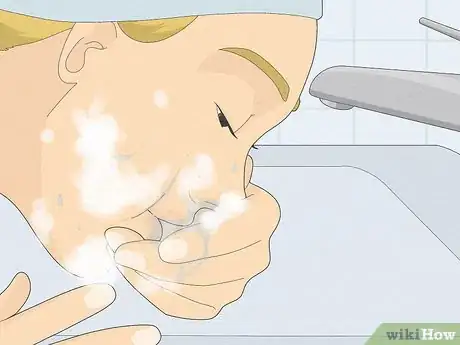
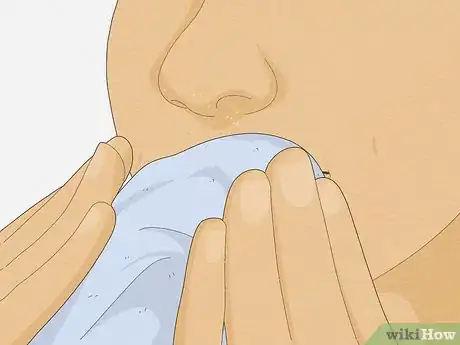
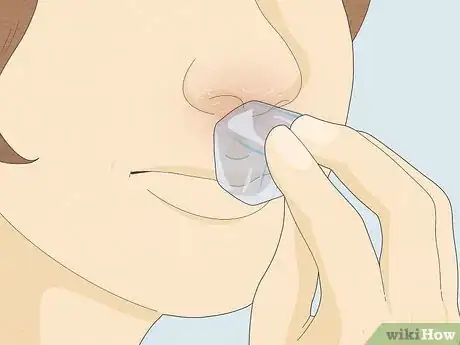
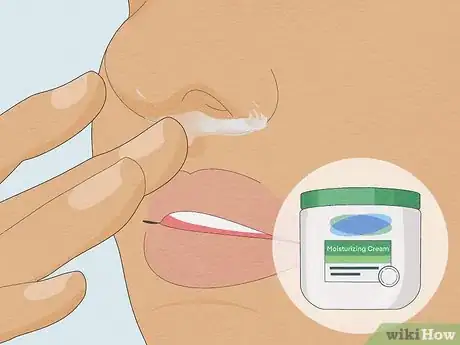

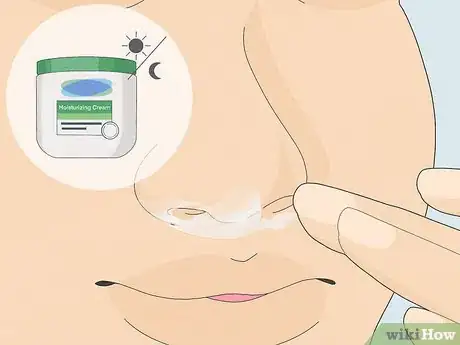
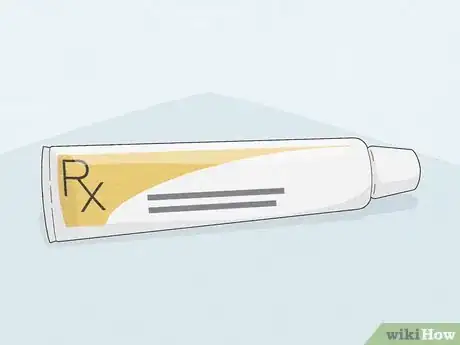
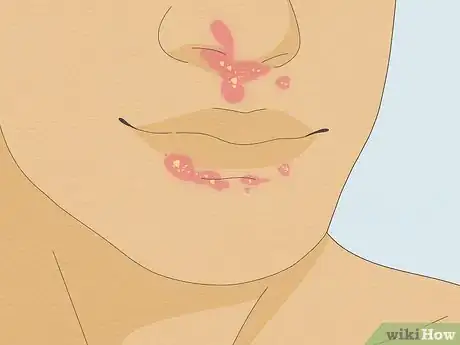

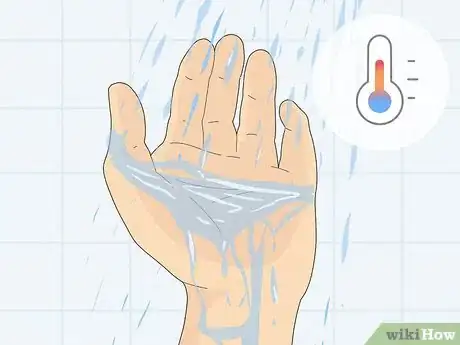




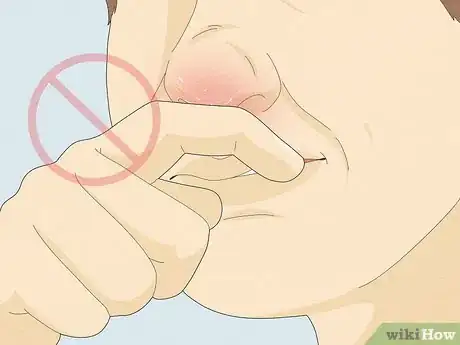
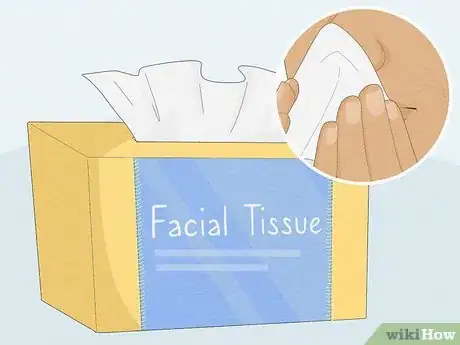
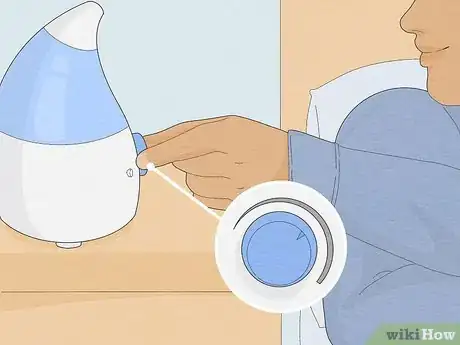


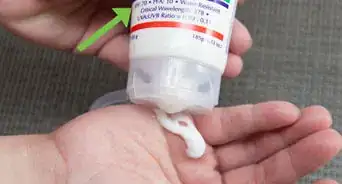
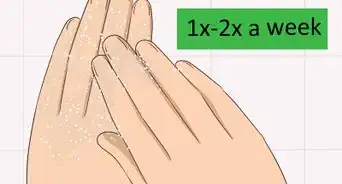

-Step-8-Version-3.webp)


